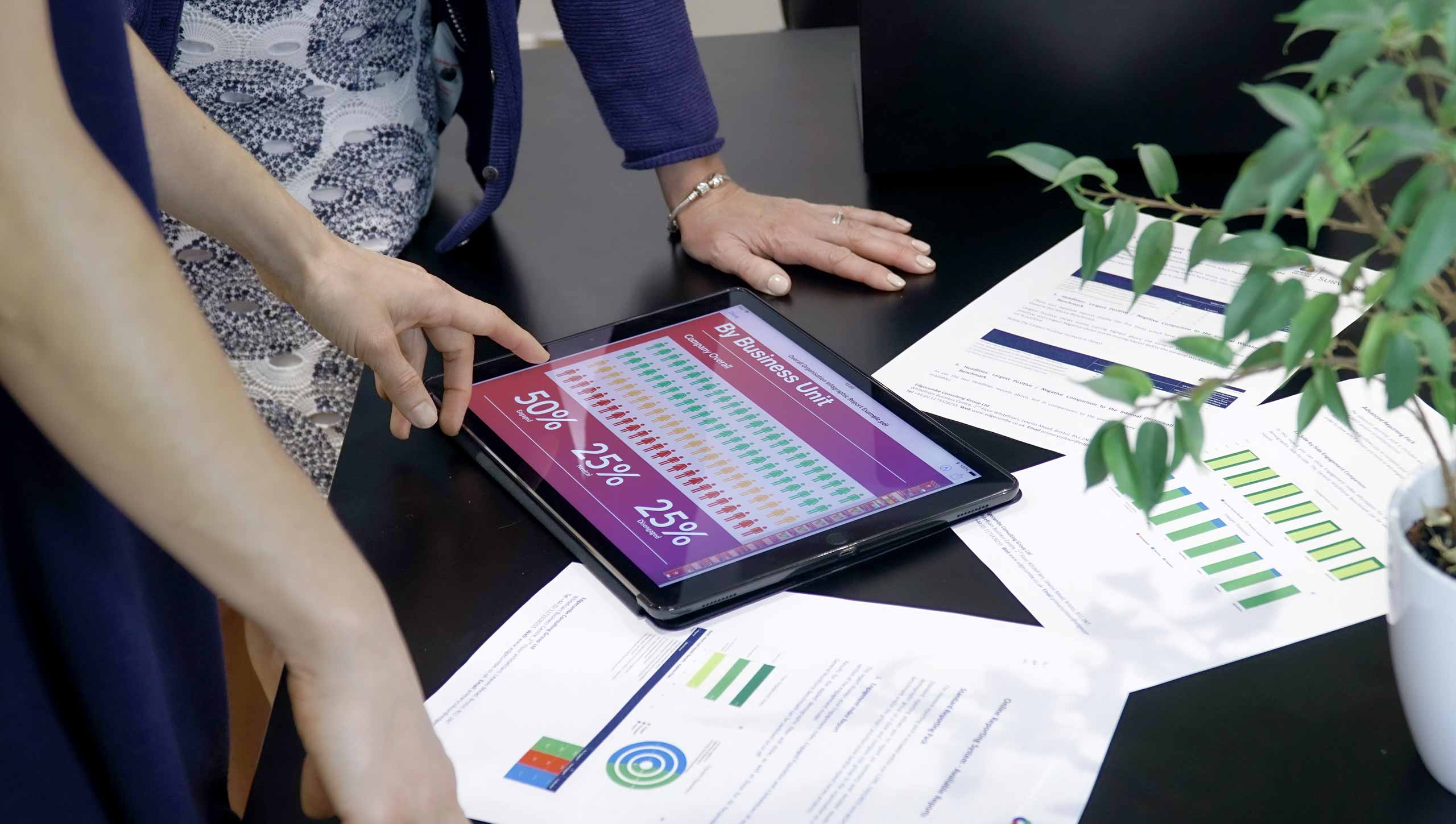You have no doubt already seen, heard and read countless thought pieces on how the world of work will not be the same following the pandemic; we have all lost count of how many ’new normals’ we have been through over the past 18 months! To say that the last year has been challenging would be an extreme understatement, but what cannot be understated is the extent to which doctors, nurses, colleagues, managers, leaders, cleaners, and everyone in between has come together and worked incredibly hard to keep the world moving. And while we knew we could see this in people’s actions, we wanted to find out whether our data was telling the same story.
Measuring employee engagement during the pandemic
We wanted to explore the key trends in the engagement survey data we have collected from our clients throughout the coronavirus pandemic to help us understand the potential implications for the workforce of the whirlwind that has been the past 18 months (and what this might mean for the future).
This initial research consisted of data gathered from 2,891 employees from 13 surveys conducted between March 2020 and December 2020. The key finding to emerge is that employee emotional engagement appears to have increased overall during the pandemic.
We measure the level of engagement among staff using our engagement index model. This model is based on academic and corporate research and reflects the most influential authors (Kahn, Schaufeli and Bakker) and the most validated measure of work engagement in the academic field (the Utrecht Work Engagement Survey (UWES)). These authors define employee engagement as involving three core concepts:
- Absorption.
- Vigour.
- Dedication.
We have formulated this definition into our ‘head, heart and hands’ model of engagement. An engaged employee will invest their head (intellectual buy-in), heart (emotional buy-in) and hands (motivation and behavioural effort) into their work and their organisation.
Emotional engagement refers to the extent to which people feel emotionally committed to the organisation and their work. Emotionally committed employees are more enthusiastic about their work and contribute more actively to the wider organisation. Because they find their work meaningful, feel involved and are aware of how they are contributing to the success of the organisation, they make more discretionary effort to fulfil the organisation’s goals.
The results – increased emotional engagement
Interestingly, when compared to our General Workforce Benchmark (responses over the past five years), this latest research found that employees have been considerably more emotionally engaged during the pandemic (80% of employees reported being fully emotionally ). Therefore, not only have people been working hard but, through finding meaning, taking pride in their work, and being committed to their organisations, they have shown more emotional investment to help overcome the challenges they have been facing over the past 18 months.
Of course, we cannot ignore potential sampling bias here. We are only looking at data from organisations that were in the privileged position to conduct engagement surveys when many organisations were not able to survey their staff alongside their other pressing HR activities. But it could be argued that it is this emotional engagement that has helped them rise to the challenges posed by Covid and has put them in a more resilient position than many other organisations. Our research is rife with evidence that emotionally engaged employees are more likely to perform better, go above and beyond for their organisations and maintain positive wellbeing through good times and bad.
It takes two to tango – the psychological contract
While this strong emotional connection with work and organisations means that employees are more likely to commit to organisations and take on extra responsibilities, this can only go on for so long without reciprocation. Like any relationship, this commitment must work both ways.
The give and take between employer and employee is commonly referred to as the ‘psychological contract’. The psychological contract describes the unwritten mutual trust and confidence between organisation and employee. When employees see that there is a balance between the contribution they make to their organisations and what they receive back from their employers, they are much more likely to perform better and, when required, go above and beyond. However, if emotional engagement and commitment are not reciprocated (i.e. if the employee’s terms in the psychological contract are not met) this imbalance can have drastically negative consequences for that person and the organisation:
- The extra roles and responsibilities that people took on during the pandemic may be shelved.
- The willingness to help and support others may be replaced with reluctance and frustration.
- The pride and meaning people found in helping their organisation, and the ‘wartime’ spirit to stay afloat through the pandemic, may be replaced with feelings of dissatisfaction, which can eventually lead to employees looking elsewhere for an employer who will give them a fair deal.
Our analysis showed that whilst employees were more emotionally engaged, they were feeling less positive about training, development and performance management, which suggests that a potential imbalance in the psychological contract may already be starting to show. Therefore, it is crucial that we celebrate the emotional commitment shown by staff and acknowledge that it is not sustainable long-term without meeting the demands of the psychological contract.
Tips for building emotional engagement in the workforce
- Be clear what is expected of employees and what you can offer them as a part of their employee experience.
- Recognise the amazing work that your people have done and continue to do despite the disruption.
- Facilitate effective two-way communication; keep employees up to date with future plans and exciting news and events.
- Continue to build people’s sense of purpose through inspirational, compassionate leadership communication.
- Restart employee learning and development initiatives.
- Manage employee expectations; we aren’t out the woods yet but acknowledging that and being frank is always an easier pill to swallow.
- Monitor employee engagement through regular surveys to keep track of key drivers of engagement.
Now more than ever, it is important to check in with your teams and colleagues. If you are interested in measuring employee engagement and keeping up to date with the key drivers of engagement among your people, why not get in touch with us to see how we could help you build an emotionally engaged workforce? We work with household names to provide psychology-led, evidence-based employee engagement surveys that are simple and effective.






















